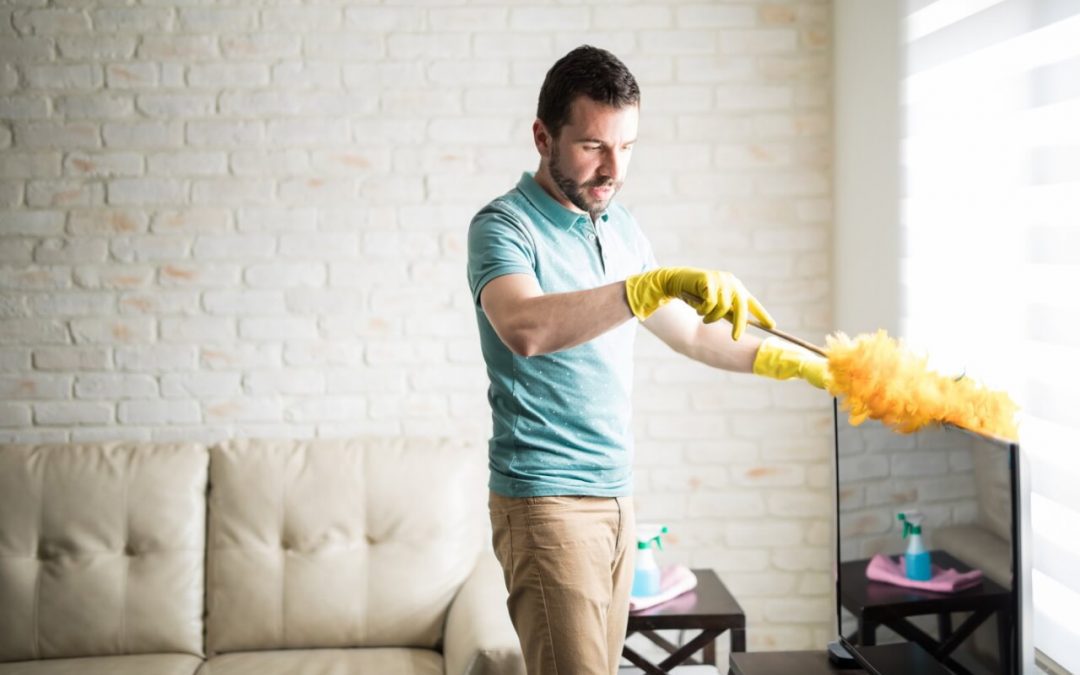Millions of Americans suffer from allergies. If you or a family member struggles with allergy-like symptoms, you understand the discomfort associated with coughing, sneezing, sniffing, and itchy, watery eyes. Allergy-proof your home to keep the living spaces clean and comfortable. Let’s look at ways to reduce allergens in each room.
Allergy-Proof Your Home: The Kitchen
Because the kitchen is the most frequented room in homes, it’s imperative to keep it clean and allergen-free.
Check for leaks. Leaking pipes and dark, humid environments contribute to the perfect place for mold and mildew to grow. When you find a leak, repair it immediately. If you don’t have the time or skills to handle the repair, hire a professional plumber.
Clean the fridge thoroughly. Because the refrigerator doesn’t have good ventilation, mold can grow inside. Clear the shelves and clean the fridge. Throw away expired or moldy food products.
Use the ventilation fan to lower humidity. Use the vent hood, turn on a fan, or open a window to improve circulation and eliminate moisture when cooking. Inadequate ventilation will promote mold growth.
Allergy-Proofing the Bathroom
Because of the moisture and high humidity, the bathroom is one of the most common rooms in the home to find mold. Here are a few ways to reduce mold growth in your bathrooms.
Use the exhaust fan. Airflow is critical in keeping the bathroom from accumulating moisture, promoting mold growth. If you don’t have a ventilation fan in your bathroom, install one. If this is not possible, keep the door or a window open when bathing or showering.
Use mold-resistant paint when remodeling. If wallpaper is in your bathroom, remove it and install tile or paint. Choose a mold-resistant paint, which will help discourage mold growth.
Combating Allergens in the Bedroom
You spend at least one-third of your time in your bedroom. To sleep soundly, keep it allergen-free.
Use dust mite-proof coverings. Add microfiber covers on pillows, box springs, mattresses, and comforters to keep dust mites away.
When you or a family member suffers from allergies, the bed linens must be changed and washed at least once a week. Wash them in hot water (130 degrees Fahrenheit kills dust mites). If washing in hot water isn’t an option, dry them at a high temperature for at least 15 minutes
Replace the mattress every ten years and replace the bed pillows every five years. Mold spores and dust mites can live inside pillows and mattresses, triggering allergy symptoms and asthma attacks.
Allergy-Proof Your Home: Living Room
The living room is where we spend time with family and friends. Make the room as comfortable as possible by taking steps to eliminate allergens.
You may love your fabric couch, but the couch’s fibers can trap allergens. Invest in leather furniture to minimize the presence of dust mites and other allergens. Alternatively, use washable slipcovers for your living room furniture.
Choose window coverings carefully, finding fabrics that won’t harbor allergens. Purchase washable curtains, like linen or cotton, so you can launder them every week or two. Alternatively, opt for blinds that are easy to clean.
Clean the living room frequently. Dust builds up quickly on surfaces throughout your home. Wipe down coffee tables, windowsills, fireplace mantles, end tables, and bookshelves.
Keeping a clean home is vital to reduce allergens and make the living spaces healthier. Set aside time in your schedule and enlist family members to help with the chores. You’ll create a cleaner, more comfortable environment for allergy sufferers.
Digs Doctor Home Inspections provides inspections in Charlotte and the surrounding areas of North and South Carolina. Contact us to request our services.

